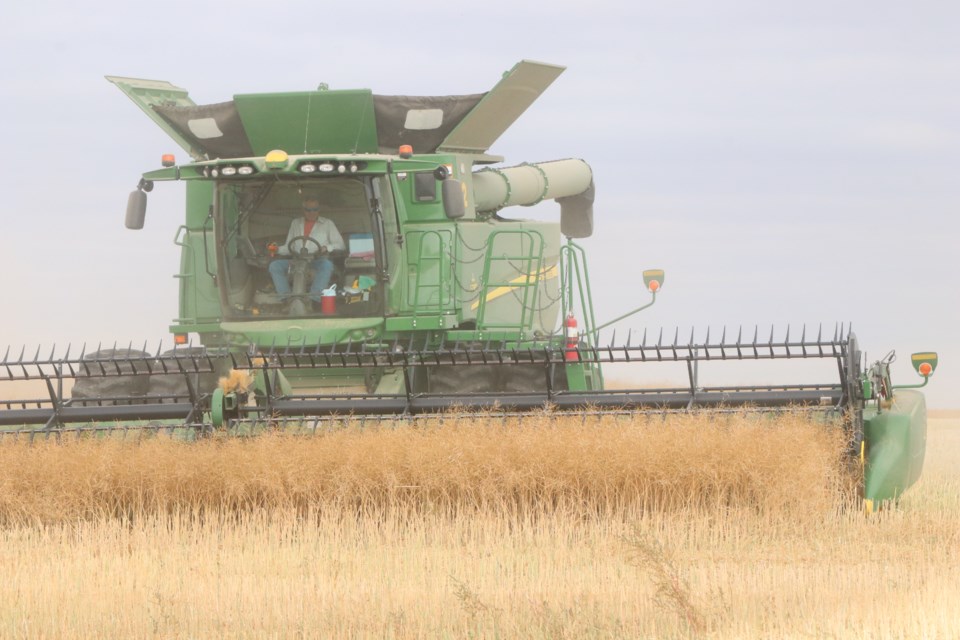SOUTHWEST SASKATCHEWAN — As crops continue to rapidly mature within the region, many producers are desiccating pulse crops and beginning their harvest operations. The region currently sits at four per cent of harvest complete for the year.
Producers have been making progress harvesting winter cereals, pulse crops and cereals that are mainly being used as feed within the region. Currently, 49 per cent of the fall rye crop has been harvested. Twenty-three per cent of field peas have been harvested within the region, followed by 10 per cent harvested for lentils. Thirty-five per cent of triticale has been harvested for feed, followed by seven per cent of oats harvested for feed and three per cent of barley harvested for feed. A full summary of individual crop harvest progress for all regions can be viewed in the attached harvest progress table.
Producers are finishing their haying operations in the region with no potential for a second cut harvest. Dryland alfalfa yields are estimated to be 1.37 tons per acre with greenfeed estimated at 2.64 tons per acre and tame hay estimated at 1.35 tons per acre. Irrigated alfalfa is estimated to be 3.20 tons per acre. Silage yields are estimated to be 6.10 tons per acre within the region.
The majority of the region received little to trace amounts of precipitation over the past week. The highest rainfall recorded fell in the Marquis area at 24 mm followed by the Webb area at 9 mm. The Shaunavon, Kyle and Cabri areas received 5 mm over the past week.
Topsoil moisture continues to decline with the persistent hot and dry conditions. Currently, cropland topsoil moisture is rated as 17 per cent adequate, 43 per cent short and 40 per cent very short. Hayland topsoil moisture is reported at five per cent adequate, 43 per cent short and 52 per cent very short. Pasture topsoil moisture is seven per cent adequate, 43 per cent short and 50 per cent very short. Producers are hopeful for moisture following harvest to help with replenishing topsoil moisture conditions.
The lack of moisture and heat continues to be the main causes of crop damage throughout the region. Wind and grasshoppers caused up to severe damage in some areas throughout the region. Aphids and gophers accounted for minor to moderate damage over the past week. As canola continues to mature, producers are observing sclerotinia stem rot emerging in their fields along with aborted pod development due to the extreme heat encountered during flowering.
For more information about Southwestern Saskatchewan, explore the .




